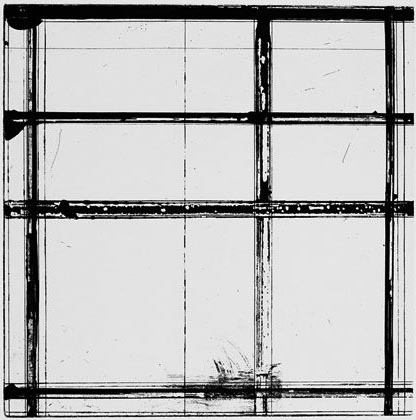Brice Marden
I refer to nature. I accept nature as a reality. It's what the painting's about.
In 2006 the Museum of Modern Art in New York mounted what Roberta Smith in the New York Times called “a quietly magnificent retrospective” of forty years of paintings and drawings by Brice Marden (the exhibition traveled to the San Francisco Museum of Modern Art and the Hamburger Bahnhof in Berlin). Marden, Smith continued, “has spent his career assiduously converting the rule-ridden zone of Minimalist abstraction into a capacious yet disciplined place, pushing it toward landscape and the figure while reconnecting it to its roots in abstract expressionism and beyond, in non-Western art.”
Brice Marden (1938-2023) received a BFA in 1961 from the Boston University School of Fine and Applied Arts. That summer, he won a coveted place in the Yale Norfolk Summer School of Music and Art, and went on to receive an MFA degree from Yale University in New Haven in 1963. He moved to New York that year and worked as a guard in the Jewish Museum. He spent a few months in Paris in 1964, and on his return made his first monochromatic painting. In Paris he had been working on dense, often gridded, drawings in charcoal, wax, and oil pastels, extensively scraped and re-worked, inspired by the look of tiles in his kitchen, the activity of workers laying tiles in the neighborhood, and by intense study of paintings in the Louvre.
In the 1970s his work was strongly influenced by Greece, the look and feel of the place, and by classic proportions. Eventually he purchased a home on the island of Hydra. In 1971, after his first trip there, he created a series of etchings called Ten Days at Crown Point Press, followed (in subsequent years) by Adriatics, Five Threes, Tiles, and other works. He kept notebooks, and in 1974 wrote, “I believe in the indisputability of the plane.” His paintings at the time were made up of monochromatic panels in encaustic with subtle colors and sensual textures. “I paint nature,” Marden said, “I accept nature as a reality. It’s what the painting’s about.” His work, in all its forms, reconciles nature with the plane.
In the early 1980s Marden was asked to create designs for stained glass windows in the Cathedral of Basel, Switzerland, and he began to think about transparency and to work in circular and arched forms. The windows were never realized, but the thinking begun by them, combined with a trip to Thailand, India, and Sri Lanka and an encounter with a major exhibition of Japanese calligraphy in New York set Marden’s painting in a new direction that involved thin paint and gestural marks that in time became planes in themselves. In the late 1980s and early 1990s he was occupied with an extensive series of paintings, drawings, and etchings based on poetry and calligraphy by an eighth-century Chinese monk named Han Shan, whose name translates to Cold Mountain, Marden’s title for the works. Since then, Marden’s paintings have been inspired by both Asian and classical themes, including a series on the muses.
Marden’s paintings are in the collections of most of the important contemporary museums of the world, including the Tate Britain; the Kunstmuseum, Basel; the Museum of Contemporary Art, Chicago; and the Museum of Modern Art, New York. —KB
